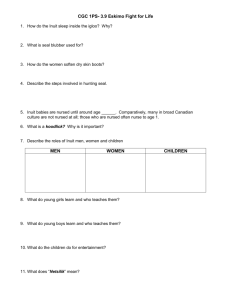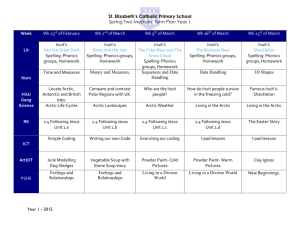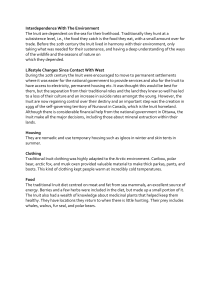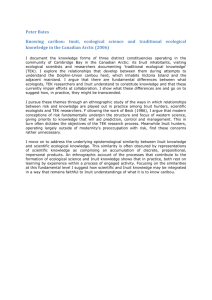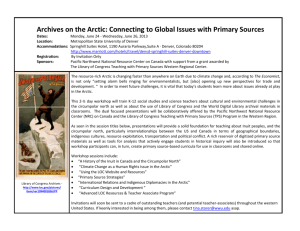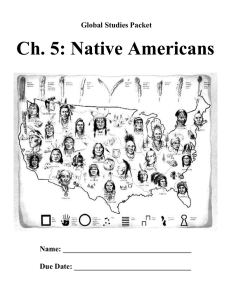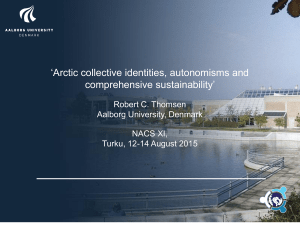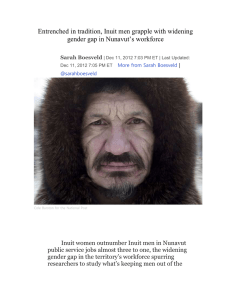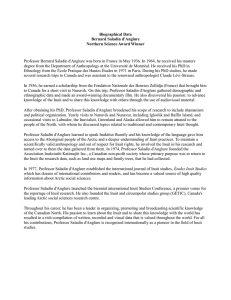Inuit Engineering Anton Filatov CDE Standards 2
advertisement
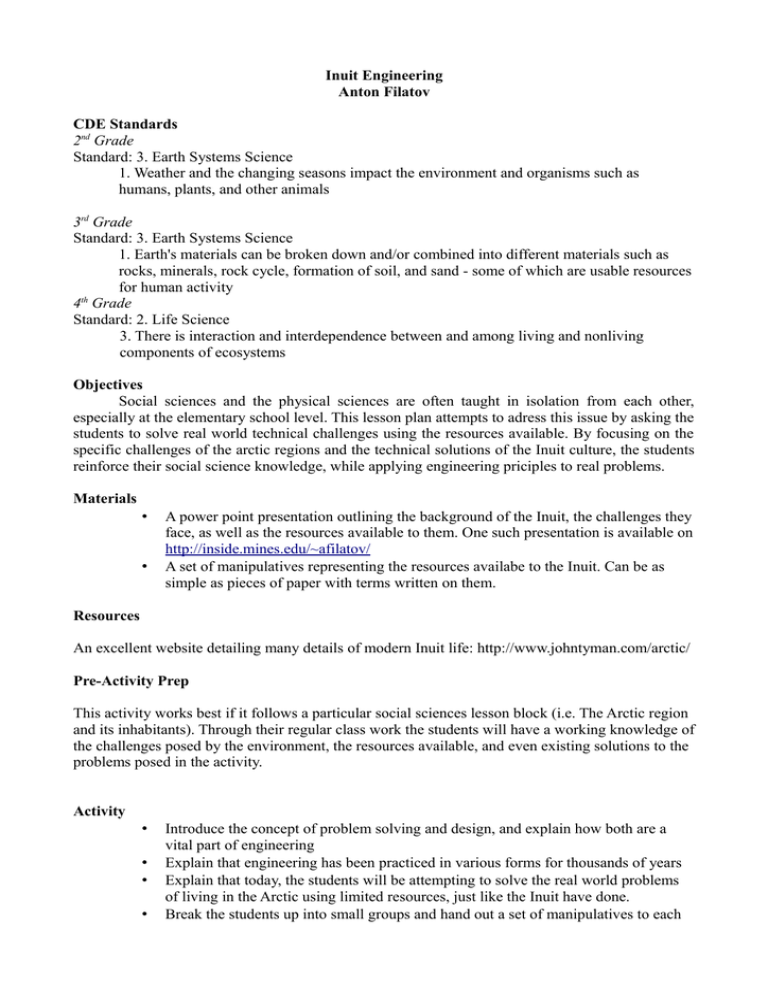
Inuit Engineering Anton Filatov CDE Standards 2nd Grade Standard: 3. Earth Systems Science 1. Weather and the changing seasons impact the environment and organisms such as humans, plants, and other animals 3rd Grade Standard: 3. Earth Systems Science 1. Earth's materials can be broken down and/or combined into different materials such as rocks, minerals, rock cycle, formation of soil, and sand - some of which are usable resources for human activity th 4 Grade Standard: 2. Life Science 3. There is interaction and interdependence between and among living and nonliving components of ecosystems Objectives Social sciences and the physical sciences are often taught in isolation from each other, especially at the elementary school level. This lesson plan attempts to adress this issue by asking the students to solve real world technical challenges using the resources available. By focusing on the specific challenges of the arctic regions and the technical solutions of the Inuit culture, the students reinforce their social science knowledge, while applying engineering priciples to real problems. Materials • • A power point presentation outlining the background of the Inuit, the challenges they face, as well as the resources available to them. One such presentation is available on http://inside.mines.edu/~afilatov/ A set of manipulatives representing the resources availabe to the Inuit. Can be as simple as pieces of paper with terms written on them. Resources An excellent website detailing many details of modern Inuit life: http://www.johntyman.com/arctic/ Pre-Activity Prep This activity works best if it follows a particular social sciences lesson block (i.e. The Arctic region and its inhabitants). Through their regular class work the students will have a working knowledge of the challenges posed by the environment, the resources available, and even existing solutions to the problems posed in the activity. Activity • • • • Introduce the concept of problem solving and design, and explain how both are a vital part of engineering Explain that engineering has been practiced in various forms for thousands of years Explain that today, the students will be attempting to solve the real world problems of living in the Arctic using limited resources, just like the Inuit have done. Break the students up into small groups and hand out a set of manipulatives to each • • • • • group Start the presentation and go through the introductory slides which review background information of the Inuit, the challenges posed by living in the Arctic, and the available resources. Introduce the first problem. In the provided presentation the first problem is building a weather proof shelter out of available materials. Ask the students to discuss within their groups possible solutions to the problem. Stress that only the materials given to them may be solve the problem. Encourage discussion. Allocate approximately 5 minutes to this stage, adjusting as needed. After the time is up, solicit solutions from the teams. Emphasize that a good solution is not a one word answer. Ask the students to tell you exactly which resources they use, and how. Continue working through the various problems at the appropriate pace for the classroom. Encourage the students to explore novel solutions, and not just replicate the solutions that have been presented in the previous lectures (igloos, etc.) Modifications This lesson and the provided materials are focused on the Inuit, however the same process can be applied to any culture, which would allow the instructor to tailor the lessons to each classroom. Post Activity Evaluation • • Ask the students to describe problem solving and design Ask the students to tell you specific problems faced by the Inuit, and how they have adapted the available resources to solve these problems.

